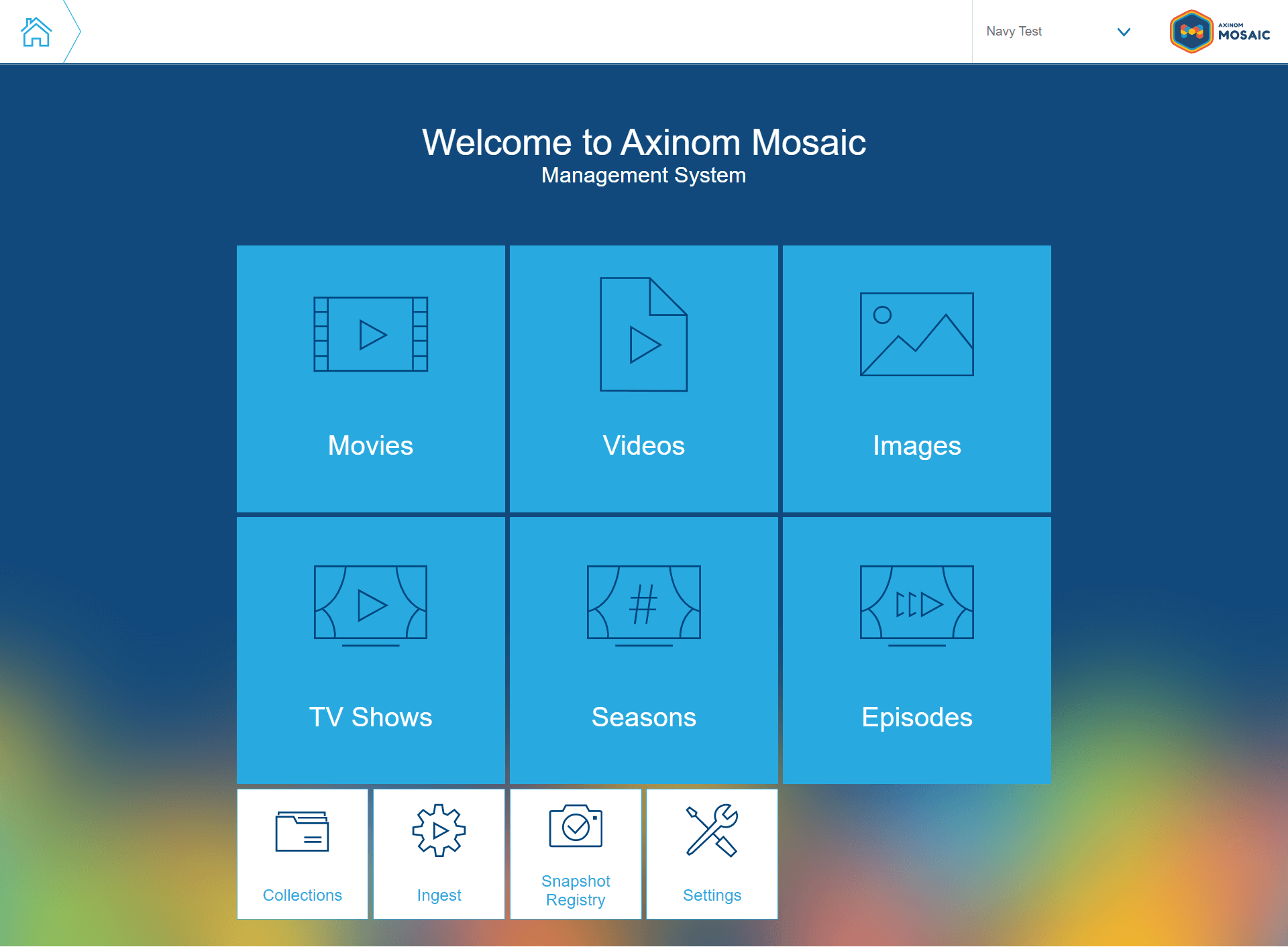According to ComScore, 82.4 million U.S. homes watched OTT in June 2021, an increase of 14.7 million homes since January 2020. The average home viewed 100 hours of OTT content across June 2021. The ability to serve such ever-growing numbers rests on the efficiency of the media supply chain of OTT providers.


Connecting Your Media Supply Chain on a Single Interface
Ingest, Manage, and Publish Media Content Effortlessly
The media supply chain consists of many steps. Mainly ingestion of media content from the point of origin, management around metadata and ultimately publishing it to end-user devices.
Despite owning swaths of media content, the bottleneck for many media companies today is the traditional approach towards the media supply chain. The traditional setup is difficult to manage due to highly fragmented and complex workflows that prevent collaboration and efficiency.
Solving the problem of siloed workflows requires a centralized setup, one that combines media supply chain workflows to function as an integrated whole. This is where a media asset management solution comes into play.
Essentials of a Media Asset Management Solution
Consolidates your media workflows
The media asset management solution must unite your media supply chain workflows under a unified interface for better collaboration among teams. It has to offer a standardized UI/UX to maintain consistency throughout and integrate seamlessly with your current systems and technologies.
Modular and bespoke
To cater to the unique needs and ever-changing requirements of video streaming and OTT platforms, a media asset management solution has to be modular and customizable. It needs to adapt to existing workflows while also being open to newer requirements when needed.
Drive efficiency
Through a media asset management solution, you must be able to automate your manual workflows that need to be duplicated for each media asset. This drives efficiency in terms of cost and faster time to market.
Simple and intuitive
A media asset management solution should offer a simple and intuitive user interface with easy access to browse, select and edit metadata. It must also provide full control to your editorial teams to ingest, manage, publish and unpublish media content that goes into end-user devices.
A Cohesive Media Supply Chain
Axinom Mosaic offers a centralized media asset management solution designed to manage media assets through a unified management interface. It is based on a service-oriented architecture consisting of microservices and micro-frontends that combine workflows surrounding media ingest, asset management, metadata enrichment, and publishing to create a cohesive media supply chain. It is an open solution that can be customized and extended to meet bespoke requirements.
The two main Axinom Mosaic services that connect the media supply chain to your end-users devices are Axinom Media and Axinom Catalog. Axinom Media is perfect for managing massive content catalogs, such as OTT platforms with millions of media assets (movies, TV shows, seasons, episodes, etc.), including license management for multiple regions. It offers automated workflows to ingest media metadata and orchestrates the encoding and DRM protection of related video files and import of images. The media service allows editors to enrich metadata, set up asset relations, and finally publish the media assets.
Axinom Catalog makes the published media asset available to the end-user devices in the front end through a GraphQL API. It allows end-users to find media content by its ID and filter the catalog by various attributes, such as title, release date, etc.
Let’s take a closer look at the Axinom Mosaic management interface for OTT backends and the workflows it offers.
Unified Media Asset Management

The media asset management solution offers workflows to manage movies, TV shows, seasons, episodes, and collections. Each registers a tile on the management interface that starts the workflow to view and manage the corresponding entities. The additional tiles seen on the interface are for the ingest, publishing snapshot registry, and settings for movie and TV show genres.
The workflows are spun up on the interface as micro-frontends using Piral as an engine, and the UI is implemented in React. The micro-frontend approach makes it easier to maintain workflows by giving complete autonomy to your teams. The micro-frontend interacts with the media microservice backend via its GraphQL API.
Ingest
Axinom Media offers ingestion capabilities to ingest metadata and orchestrate the import of associated assets. The process is initiated by uploading a single JSON document into a GraphQL API endpoint on the Mosaic management interface. You can define all metadata properties and reference related videos and images on the JSON document. The metadata properties (title, synopsis, cast, etc.) will be directly updated on the system. The import of video and image files will be orchestrated on Axinom Encoding and Axinom Image, respectively.
Enrich Metadata
Axinom Media allows editors to enrich metadata and set up asset relations for movies, tv shows, and collections. This includes editing metadata properties (e.g., title, synopsis, description, studio, release date, etc.), setting relational metadata (tags, movie genre, cast, and production countries), as well as assigning videos and images for media content. Furthermore, you can manage licenses for movies and tv shows which dictate when and in which countries content must be made available.
Publish
Axinom Media is the single source of truth where metadata properties and related asset details surrounding movies/TV shows/etc. are managed and published. When you publish a media asset, a publishing snapshot will be generated which aggregates all metadata properties and related asset details on a single JSON document. After the snapshot is created and validated, it is published through RabbitMQ messaging to Axinom Catalog to be accessible from end-user devices. The publishing process is available for single entities or as bulk operations for many entities at once.
Sign Up to the Portal
Get a sneak peek at the simplicity of Axinom Mosaic by signing up for a free evaluation account that gives you access to:
-
Sample code
-
A full-featured test environment
-
Comprehensive documentation
-
Free integration support








